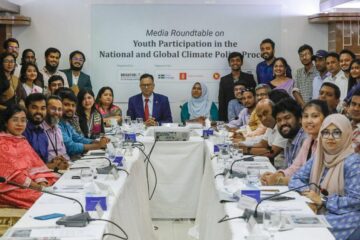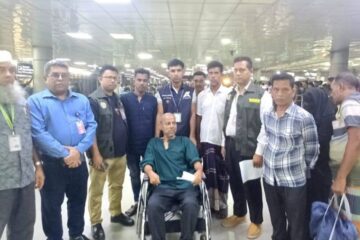Bangladesh Cable Industry Limited, a production-oriented and profitable enterprise of the country, has made a profit of Tk148 crore in the last five years. Currently, telecom copper cable, produced by the company, is meeting the country’s demand.
The authority concerned has, however, planned to export its products after meeting the country’s demand. They have also devised a medium-term plan to meet the demand of the government and private institutions by installing new machinery for producing HDPE/HDD pipes suitable for Wasa and setting up a LAN cable plant by December 2026. Besides, they have come up with a long-term plan to contribute to the country’s power sector by December 2030.
The company has prepared a roadmap for boosting the annual production from 20,000 kilometers to 25,000 kilometers by installing three more new machines at the optical fiber cable plant within the next five years, increasing the production capacity from 6,500 kilometers to 8,000 kilometers by installing two more new machines at the HVPE telecom duct plant, and raising the production capacity of the super enamel copper wire plant from 300 tons to 600 tons.
At the same time, the company has planned to install rooftop solar panels with its own funds and launch them by December next year.
The cable industry was established as a public limited company on 32 acres of land in 1967. It is the only state-owned cable factory in the country, located on the banks of the Bhairab River in the Shiromoni industrial area in Khulna. After the country’s independence, the company started its journey by producing copper cables in February 1972. Later, the optical fiber cable plant was installed in 2010, while the HVPE telecom duct plant was installed in 2016, and electrical overhead conductor and cable manufacturing plants were installed in 2019.
Company’s General Manager (Production) Enamul Haque said that the quality of raw materials imported for production at Bangladesh Cable Industry Limited and the quality of manufactured products are tested by BUET, KUET, CUET and MIST.
He said: “99.99% copper rods imported from developed countries like Australia, Korea and Malaysia are used, 61.50% aluminum rods imported from Malaysia, China and India are used, world-class PDC and steel core wires imported from China and India are used, and the quality of the products is ensured as per Bangladesh standards.”
He further said: “Considering various sectors, including communication, the country needs to have a five lakh-kilometre fibre optical cable network. But there is only one and a half lakh kilometres of fibre network in the country. Again, 75% of the existing network is an overhead network, which is at risk during disasters. To keep the communication network smooth and less risky, the connections need to go underground. Old cable networks of various government and private service sectors should be brought under a single fibre-optic cable network. Therefore, there is immense potential for the fibre optical cable industry in Bangladesh.”
On August 21, Special Assistant to the Chief Adviser in charge of the Ministry of Posts, Telecommunications and Information Technology, Faiz Ahmad Taiyeb, said: “If the international certification of an environment-friendly and pollution-free green factory is accepted, the brand value of the products manufactured here will increase.”
Company’s General Manager (Production) Enamul Haque said: “We have already started the process of obtaining the international certificate of an environment-friendly and pollution-free green factory. We hope that by fulfilling the conditions, we will be able to obtain the certificate soon.”



